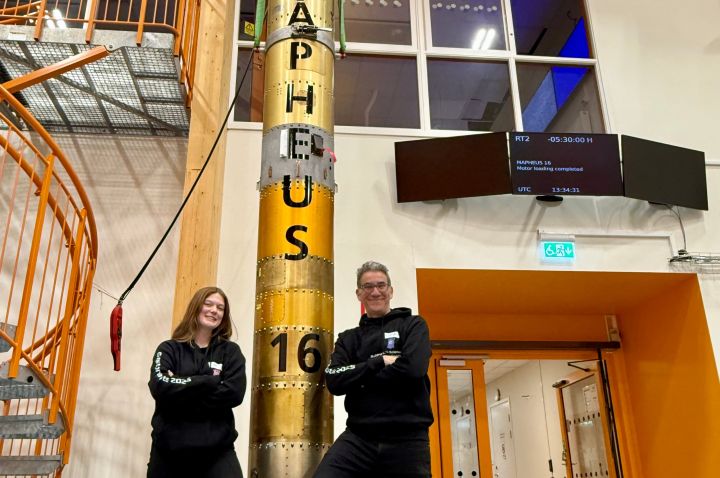The small “hotel” cubes are miniature laboratories designed by La Trobe researchers and Melbourne engineering firm Enable Aerospace. The cubes were among 21 international experiments on a sounding rocket launched by the German Aerospace Centre (DLR) from Sweden on 12 November.
La Trobe ran two mini labs on the shuttle, each filled with gut cells, affectionately nicknamed “Gastronauts”.
Professor Patrick Humbert, Director of the La Trobe Institute for Molecular Science (LIMS), and primary investigator of the Gastronauts project, said his team hoped to compare gut cells before, during and after launch to better understand how they adapt to space conditions – shedding light on cell communication, regeneration and, ultimately, cancer.
The results could have long-reaching effects, not only for the health of astronauts but also for medical advances on Earth.
“If we remove gravity, we can discover why and how gravity is important for health,” Professor Humbert said.
La Trobe Deputy Vice-Chancellor of Research and Innovation Professor Chris Pakes said the research had the potential to transform health and wellbeing in space and on Earth.
“These experiments could have far-reaching consequences,” Professor Pakes said.
The MAPHEUS-16 mission is the third time La Trobe has participated in a DLR mission.
 The small modules took a year to design and test, thanks to the collaborative efforts of La Trobe University’s PhD researcher Samantha Melrose (Humbert laboratory), Dr Amir Nasiri Kenari (Hoshino laboratory at the University of Tokyo in collaboration with Humbert laboratory) and Enable Aerospace engineer Geoffrey Cooper.
The small modules took a year to design and test, thanks to the collaborative efforts of La Trobe University’s PhD researcher Samantha Melrose (Humbert laboratory), Dr Amir Nasiri Kenari (Hoshino laboratory at the University of Tokyo in collaboration with Humbert laboratory) and Enable Aerospace engineer Geoffrey Cooper.
The enclosures were designed to keep biological samples alive and stable throughout the mission, while withstanding the intense vibration, radiation and extremes of launch and re-entry.
Each cube included one “cell hotel” and one “microgravity microscope”. The cell hotel featured slides covered with living gut cells and collected samples at each phase of the flight for later biochemical analysis. The microgravity microscope recorded the behaviour of cells on novel smart microscope slides invented by physicists from La Trobe’s Abbey Laboratory, capable of revealing cell physiological changes invisible on normal glass.
During the mission, the cells travelled through zero gravity for just over six minutes, giving scientists valuable information on human gut biology in the space environment. Each experiment was compared to an identical test on the ground.
The MAPHEUS-16 mission was launched from Esrange, a facility run by the Swedish Space Corporation (SSC). It reached an altitude of nearly 270 kilometres.
Don Love, Director of Enable Aerospace said it was great to build on the working relationship with La Trobe University and DLR on a second Gastronauts flight.
“Every time we fly, we improve the science and the working relationships required to meet such complex challenges.”
Doctor Jens Hauslage, lead Aeromedical FabLab at the DLR Institute of Aerospace Medicine and Associate Professor at La Trobe University DLR said he was pleased to have experiments from La Trobe and Enable Aerospace on board a flight again.
"The MAPHEUS 16 campaign is an excellent example of our long-standing international research cooperation in the field of life sciences in space."
MAPHEUS is a high-altitude research program of DLR and stands for ‘Material Physics Experiments under Microgravity'.
Regular flights with high-altitude research rockets have taken place under the program since 2009.
CAPTION ONE: La Trobe University's Professor Patrick Humbert and PhD researcher Samantha Melrose on site.
CAPTION TWO: DLR's MAPHEUS-16 sounding rocket carried about 500 kilograms of scientific payload – a new record for the program. Photo: supplied by DLR.
Media enquiries
Robyn Grace – r.grace@latrobe.edu.au, 0420 826 595



